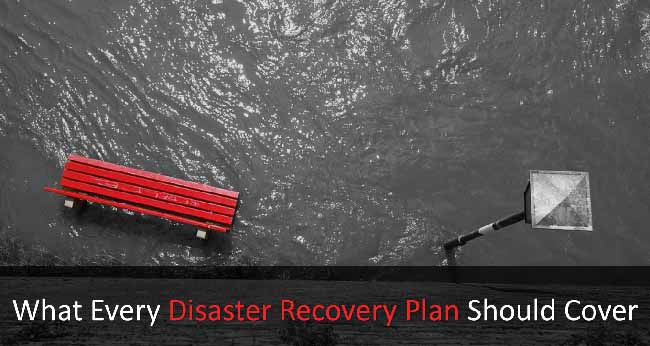It was said by Alexander Graham Bell “Before anything else, preparation is the key to success.” This too includes preparing your business in case of a disaster. A disaster is defined as any event that interrupts normal business operations. Cyber attacks, terrorist attacks, floods, fires, tornados, and even hurricanes could mean the loss or your organization's data. Catastrophic events like these could hit your business at any time which is why a disaster recovery (DR) plan is essential.
Do you know when your DR plan was last updated? When was it last tested? Has your plan been upgraded with the latest in technology and services to make recovering lost data easier? If you are unsure of the answers to these questions then chances are you may need to take a further look into your organization's plan. It likely that every business, at some point, will experience a data loss. This loss means the downtime of your end users, production, or productivity. The art to mitigating these losses are in the details of the DR plan. Here are some policies and practices that every plan should have.
A Strategic Risk Assessment
This threat analysis should take into account a complete spectrum of all potential interruptions. When taking a look at your potential risks it is important to also think about possible reactions. Each threat scenario should be detailed in the plan as well as thorough instruction on the recantation protocol. Preparing yourself early on will make it that much easier if/when a disaster ever does occur.
A Business Impact Analysis (BIA)
This identifies the potential effects that a disaster will have on your business operations. These impacts can be loss of sales and income, regulatory fines, contractual penalties, and more. Whether it is a natural disaster or a man-made event, this preparation will determine the system priorities and what your business operation depends on. It is the second step in a recovery plan, meaning that you should develop your policy and then run a BIA. Priorities.
People and Updates
Recognizing the individuals who will be in charge of responding to a crisis is another detail needed in your DR plan. Their contact information needs to be readily available. Know which personal needs to be contacted such as fire department or the police department in the case of a disaster. Another mistake made when it comes to companies DR plans is in updating after changes are made to their internal systems. When there are updates to software, technologies, and applications it is critical to update your plan as well so that it is current.
Practice
In schools across the country kids are practicing their tornado and fire drills and just like them, you too, have to practice your disaster drill. Your DR plan needs to be tested and practiced so that it is a success. If your plan is not frequently tested than it will be ineffective.
Disaster Recovery as a Service (DRaaS)
Moving data to the cloud is a growing trend in business. Comnies now storing their data in the cloud have made disaster recovery that much easier. Some of those same technology companies hosting your organization's data are offering (DRaaS) as a simpler and more economical experience. Again, when working with outside companies it is important that they are tested and validated.
A DR plan isn’t something you wait on. Preparation is the key to success in an already trying situation. Do not wait for the next natural disaster or cyber attack to put your plan in place. There are several solutions available for organizations lacking a strong DR plan. Utilizing Crossroads Technologies solutions can ensure that you have a solid plan that fits your organization’s needs.
Share this article:



